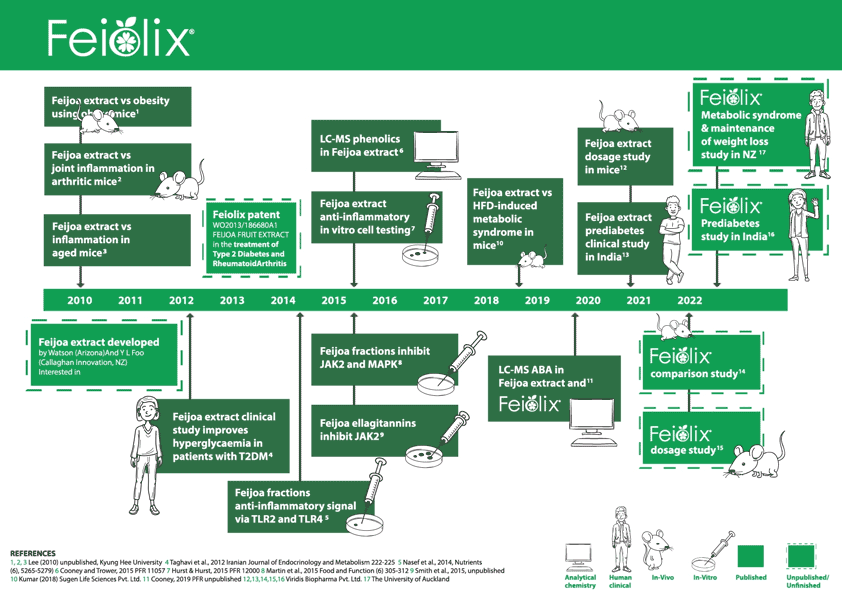GOOD METABOLIC HEALTH IS THE FOUNDATION OF A VIBRANT ENERGETIC LIFE.
WHAT IS METABOLIC HEALTH?
Metabolic health is the effective conversion of energy that we consume through food and drink into energy we expend moving, thinking, and simply existing. This balance is regulated through a system of hormones that control hunger and satiety, as well as nutrient absorption, storage, and utilisation.
Metabolic health is typically measured using the following criteria (see table).

1 Araujo, J., Cai J., Stevens J. Prevalence of optimal metabolic health in American adults: national health and nutrition examination survey 2009 – 2016. Metabolic Syndrome and Related Disorders, 2019, 17(1): 46-52
WHAT DETERMINES METABOLIC HEALTH?
dispositions
balance
These are the primary determinants of metabolic health
While nearly all hormones influence metabolism, the main hormone that determines whether nutrients are absorbed, utilised, or stored for later use is INSULIN. Maintaining insulin sensitivity is central to maintaining health and vitality.
Insulin is secreted from the pancreas in response to consumption of food. Carbohydrates broken down into glucose elicit the strongest insulin response, while protein broken down into amino acids elicit a moderate insulin response, whereas fats broken down into fatty acids elicit a minor insulin response from the pancreas.
Insulin secreted into the blood stream triggers muscle cells to absorb glucose from the blood so it can be used for energy. Overtriggering insulin secretion eventually causes loss of insulin sensitivity.
Glucose/Insulin Reaction to Macronutrients


“Metabolic health influences both quality and quantity of life- meaning that maintaining metabolic health can add years to one’s lifespan, but it also enhances quality of life because metabolic health amounts to having more energy to expend, rather storing energy in unhelpful places around the body.”
– STARIN MCKEEN, SCIENTIST
What happens when our bodies lose sensitivity to insulin?
- Levels of glucose and fatty acids rise in the blood stream after eating, and circulate at higher level for longer before being absorbed into muscles, adipose tissue, and nerve cells
- This is measured as blood glucose, HbA1c, and blood triglycerides
- Mitochondria, the power houses within cells, are less efficient and slower to use glucose and fatty acids for energy
- Inflammatory molecules are produced and circulate throughout the body
- Hunger and appetite signals are imbalanced leading to cravings and overeating
- Dysbiosis of the gut microbiome which may lead to bowel discomfort

How can we restore and maintain insulin sensitivity?

Reduce inflammation (Schenk et al)

Increase glucose transport from the blood stream to be utilised by skeletal muscle and brown adipose tissue (active fat)

Consume balanced nutrients for energy expended

Maintain a healthy gut microbiome

HOW DOES FEIOLIX RESTORE AND MAINTAIN INSULIN SENSITIVITY AND METABOLIC HEALTH?

Feiolix contains 3 primary classes of bioactive compounds that support metabolic health through multiple systems:
- Abscisic acid
- Polyphenols (Pedunculagin)
- Dietary fibre (xyloglucans)
WHAT IS ABSCISIC ACID AND WHAT DOES IT DO?
Abscisic acid is a universal signalling hormone, meaning both plants and animals produce this molecule and express receptors for this molecule (Olds 2018). In plants, abscisic acid is associated with fruit ripening and the separation of fruit from stem. In humans, abscisic acid is normally secreted from the pancreas at very low concentrations along with insulin. Abscisic acid binds to LANCL2 receptors which have been found on many cell types including pancreatic cells, muscle cells, adipose tissue, and nervous system tissues (Sturla 2009).
In all of these tissues, abscisic acid increases the action of GLP-1, which enhances insulin secretion and reduces glucagon secretion. Glucagon operates oppositely than insulin. Furthermore, in the pancreas, when abscisic acid binds to the LANCL2 receptors a signalling cascade occurs which ultimately stimulates the release of insulin before blood glucose levels get too high (Bruzzone 2008). Abscisic acid is an insulin secretogogue.

In skeletal muscles and brown adipose tissue (a special type of fat cells), when abscisic acid binds to their LANCL2 receptors it ultimately increases the expression of genes in the mitochondria involved in the metabolism of glucose and fatty acids (Zocchi 2017). This has also been measured as increase in post-prandial thermogenesis: increased energy utilisation after consuming a meal, leading to heat generation. Further increased thermogenesis may be attributed to the activation of brown adipose tissue to absorb and use glucose (Sturla 2017). Abscisic acid is thermogenic.

In the central nervous system, when abscisic acid binds to LANCL2 receptors it inhibits inflammatory processes (Leber 2020). Reduced inflammation in the central nervous is crucial for maintaining insulin sensitivity as well as appropriate hunger and satiety signalling (Sanchez-Sarasua 2016, Schenk 2008). Abscisic acid is anti-inflammatory and supports appetite regulation.

“ Abscisic acid also increases the number of mitochondria and activity of mitochondria in fat cells, which translates as increased energy utilisation, or thermogenesis. The polyphenols in Feiolix are also potent anti-inflammatory molecules, which create an environment for insulin to be more effective. “
– DOUG ROSENDALE, CHIEF SCIENCE OFFICER
PATENTED INGREDIENT

WHAT ARE ELLAGITANNINS, PEDUNCULAGINS, AND UROLITHINS AND WHAT DO THEY DO?
Pedunculagin is an ellagitannin, a type of polyphenol found in Feijoas. Ellagitannins are too large to be absorbed directly by humans, but after being broken down in the stomach their byproducts are used by microbes which convert them into a class of metabolite called urolithins.
Ellagitannins are best known for their anti-inflammatory effects. Most of these effects are mediated by urolithins, where the effects are significant reduction in inflammatory molecules in the brain, heart, liver, and adipose tissue, all of which are implicated in metabolic syndrome (Toney 2021). Urolithins are anti-inflammatory. This anti-inflammatory effect in the brain may also support appetite regulation.
Urolithins are insulin secretagogues, much like abscisic acid. However, urolithins work through an alternative pathway, which helps to further sensitise pancreatic B cells to lower levels of glucose (Bayle 2019).
Similar to abscisic acid, urolithins increase energy expenditure in brown adipose tissue and promote the browning of white adipose tissue (Xia 2020). Urolithins are thermogenic.
WHAT ARE XYLOGLUCANS AND WHAT DO THEY DO?
Xyloglucans are a type of plant cell wall hemicellulose polysaccharides found in Feijoas. Xyloglucans support the action of bile acids in the intestines: bile acids improve lipid absorption and metabolism (Yamatoya 2011). Xyloglucans also bind glucose in the intestines, slowing absorption into the blood stream, reducing post prandial glycemic peaks (Nishinari 2020). Xyloglucans normalise blood glucose and blood triglycerides.
Xyloglucans cannot be broken down by human enzymes but some beneficial species of microbiota in the gut are able to utilise them. One of the byproducts of this fermentation is propionate, a short chain fatty acid that promotes satiety. Xyloglucans help regulate appetite.
Feiolix provides potent metabolic support:
24% less weight gain
0.86% reduction in HbA1c (3 month blood glucose average)
36.3 mg/dL reduction in fasting blood glucose
38 mg/dL reduction in blood triglycerides
17.5 mg/dL reduction in total cholesterol
18.1 mg/dL reduction in LDL (bad) cholesterol
6.7 mmHg reduction in systolic blood pressure





References
Bayle, M., Neasta, J., Dall’Asta, M., Gautheron, G., Virsolvy, A., Quignard, J. F., … & Oiry, C. (2019). The ellagitannin metabolite urolithin C is a glucose‐dependent regulator of insulin secretion through activation of L‐type calcium channels. British journal of pharmacology, 176(20), 4065-4078.
Bruzzone, S., Bodrato, N., Usai, C., Guida, L., Moreschi, I., Nano, R., … & Zocchi, E. (2008). Abscisic acid is an endogenous stimulator of insulin release from human pancreatic islets with cyclic ADP ribose as second messenger. Journal of Biological Chemistry, 283(47), 32188-32197.
Chen, H., Jiang, X., Li, S., Qin, W., Huang, Z., Luo, Y., … & Chen, D. (2020). Possible beneficial effects of xyloglucan from its degradation by gut microbiota. Trends in Food Science & Technology, 97, 65-75.
Cheng, J., Jiang, X., Li, J., Zhou, S., Bai, T., Qin, W., … & Chen, H. (2020). Xyloglucan affects gut-liver circulating bile acid metabolism to improve liver damage in mice fed with high-fat diet. Journal of Functional Foods, 64, 103651.
de Araujo, R. L., Tomás-Barberán, F. A., Dos Santos, R. F., Martinez-Blazquez, J. A., & Genovese, M. I. (2021). Postprandial glucose-lowering effect of cagaita (Eugenia dysenterica DC) fruit juice in dysglycemic subjects with metabolic syndrome: An exploratory study. Food Research International, 142, 110209.
Leber, A., Hontecillas, R., Tubau-Juni, N. et al. Abscisic acid enriched fig extract promotes insulin sensitivity by decreasing systemic inflammation and activating LANCL2 in skeletal muscle. Sci Rep 10, 10463 (2020). https://doi.org/10.1038/s41598-020-67300-2
Nishinari, K., Takemasa, M., Fang, Y., Hossain, K. S., Tsumura, Y., Sone, Y., … & Emoto, M. (2020). Effects of xyloglucan with different molar masses on glucose in blood. Food Hydrocolloids, 108, 105727.
Olds, C. L., Glennon, E. K., & Luckhart, S. (2018). Abscisic acid: new perspectives on an ancient universal stress signaling molecule. Microbes and Infection, 20(9-10), 484-492.
Sánchez-Sarasúa, S., Moustafa, S., García-Avilés, Á., López-Climent, M. F., Gómez-Cadenas, A., Olucha-Bordonau, F. E., & Sánchez-Pérez, A. M. (2016). The effect of abscisic acid chronic treatment on neuroinflammatory markers and memory in a rat model of high-fat diet induced neuroinflammation. Nutrition & metabolism, 13, 73. https://doi.org/10.1186/s12986-016-0137-3
Schenk, S., Saberi, M., & Olefsky, J. M. (2008). Insulin sensitivity: modulation by nutrients and inflammation. The Journal of clinical investigation, 118(9), 2992-3002.
Sturla, L., Mannino, E., Scarfi, S., Bruzzone, S., Magnone, M., Sociali, G., … & Zocchi, E. (2017). Abscisic acid enhances glucose disposal and induces brown fat activity in adipocytes in vitro and in vivo. Biochimica et Biophysica Acta (BBA)-Molecular and Cell Biology of Lipids, 1862(2), 131-144.
Sturla, L., Fresia, C., Guida, L., Bruzzone, S., Scarfì, S., Usai, C., … & Zocchi, E. (2009). LANCL2 is necessary for abscisic acid binding and signaling in human granulocytes and in rat insulinoma cells. Journal of Biological Chemistry, 284(41), 28045-28057.
Toney, A. M., Fox, D., Chaidez, V., Ramer-Tait, A. E., & Chung, S. (2021). Immunomodulatory role of urolithin a on metabolic diseases. Biomedicines, 9(2), 192.
Xia, B., Shi, X. C., Xie, B. C., Zhu, M. Q., Chen, Y., Chu, X. Y., … & Wu, J. W. (2020). Urolithin A exerts antiobesity effects through enhancing adipose tissue thermogenesis in mice. PLoS biology, 18(3), e3000688.
Yamatoya, K., Yamazaki, K., Shirakawa, M., & Baba, O. (2011). Effects of xyloglucan with the partial removal of galactose on plasma lipid concentration. Journal of Functional Foods, 3(4), 275-279.
Zocchi, E., Hontecillas, R., Leber, A., Einerhand, A., Carbo, A., Bruzzone, S., … & Bassaganya-Riera, J. (2017). Abscisic acid: a novel nutraceutical for glycemic control. Frontiers in nutrition, 4, 24.






